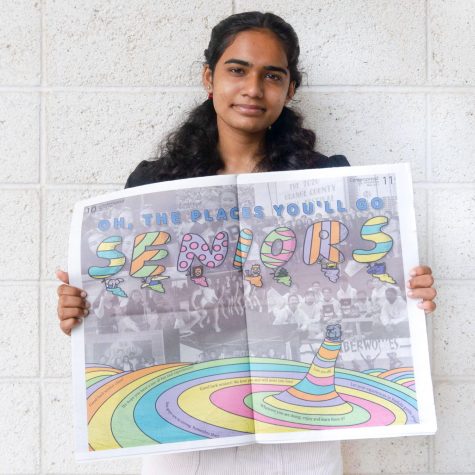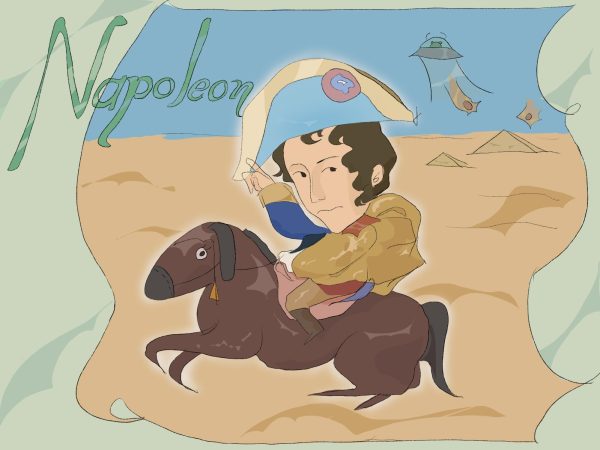Color-Blind Casting Fosters Inclusivity in Media Beyond Race
“Bridgerton” promotes diversity with the portrayal of the new season to bring inclusion within the cast on screen as it adopts color-blind casting.
A few weeks ago, regency drama “Bridgerton” released its second season on Netflix, sparking mass enthusiasm as viewers watched 193 million hours over premiere weekend. The first season featured something seemingly-unusual in the film industry: non-white main characters.
Historically, many movies and TV shows have adopted a predominantly white cast, fostering discrimination. In 2014, a study conducted by the University of Southern California (USC) revealed that 73.1% of characters across the top 100 films were white according to the USC study.
“Bridgerton” practices color-blind casting, in which race is not a factor in auditions, according to The Guardian. In order to combat the problem of discrimination, the film industry should follow in the footsteps of “Bridgerton” and make the practice of color-blind casting the norm, unless race plays a crucial factor in the plot of the films.
“Bridgerton” is not the only piece of film that has adopted color-blind casting. The 2015 musical “Hamilton” and the 1967 movie “Batman” have also featured this practice; however, color-blind casting is a rare practice in the field.
Through color-blind casting, many actors have explored new roles that they may not have been able to before. For example, person-of-color (POC) actress Halle Bailey was cast as Ariel, a traditionally white character, in the live-action version of “The Little Mermaid,” releasing in 2023.
Being able to see POC represented through media and in the film industry is crucial in that it provides encouragement and validation for underrepresented communities. Especially for young POC, seeing themselves represented through princesses and other iconic characters fosters a sense of acceptance that is pivotal during developmental years.
However, the use of color-blind casting still faces opposition, both in regards to “Bridgerton” and in general; many feel that it “erases” a person’s identity, making it come down to the fact that identity and experiences are “transferable,” according to the New York Times.
Not all identities and experiences are transferable, and thus if a film’s plot is not historically accurate without the portrayal of race, then it is justifiable to take race into account. However, in all other cases, color-blind casting should be the standard because it allows various identities to be equally represented on screen. Color-blind casting puts more emphasis on individual talent and perceives a human and their capabilities beyond the color of their skin.
“I didn’t watch period dramas because I felt like I couldn’t relate to them, maybe because I couldn’t see myself in one,” actress Simone Ashley said in an interview with Glamour Magazine. “Then ‘Bridgerton’ came along. I want to be seen as an actress who has talent and has a brain, and it just doesn’t matter what I look like.”
I want to be seen as an actress who has talent and has a brain, and it just doesn’t matter what I look like.
— Simone Ashley
Shonda Rhimes, the creator of “Bridgerton” and many other popular TV shows like “Grey’s Anatomy” and “How To Get Away with Murder,” has made it evident that color-blind casting is important in promoting diversity and inclusion. Ultimately, this diversity can change racial stereotypes and biases in the movie industry.
“People of color made up 39.7% of film leads in 2020 – a far cry from only 10.5% in 2011 and even 27.6% in 2019,” USA Today writer David Oliver said. “While Black leads were overrepresented compared to their make-up in the U.S. population, Latino, Asian, Middle East and North African and Native leads were underrepresented.”
In order to share the richness of diversity and express a beautiful tale on-screen with talented POC actors, it is important to acknowledge the importance of color-blind casting and how it ultimately fosters a greater sense of community where people are able to watch the show and enjoy the diversity and representation in the film industry beyond race.
Your donation will support the student journalists of Portola High School. Your contribution will allow us to purchase equipment and cover our annual website hosting costs.

Cara Chan is the Features Editor and Business Manager for her third year on the Portola Pilot. Though she’s feeling bittersweet about her final year,...

Arshia Sista is this year’s front page editor for her second and last year on the Portola Pilot. She’s both bittersweet and excited to design quirky...

Dheeksha Bhima Reddy is the co-Editor-in-Chief for her third and final year on the Portola Pilot. Through her newfound obsession of drinking coffee (cold...





![Levinson needed to cast an actress who could portray the emotional volatility of an adolescent drug addict, in tandem with Rue’s mental health diagnoses — among them, ADHD, bipolar disorder, anxiety and depression — and shifting relationships with friends, family and lovers. “I think that the toughest part of writing [Zendaya’s] character and sort of portraying a character that’s dealing with addiction is understanding the root causes of it and the sensitivity behind it,” Sam Levinson said.](https://portolapilot.com/wp-content/uploads/2022/03/draft-2euphoria-graphic-1-475x360.png)










